-
Italian Parsley Herb Plants For Sale
Italian flat leaf parsley is a versatile and aromatically pleasing herb. As a culinary staple, it is important in gardens and kitchens worldwide. Italian flat leaf parsley is known for its deliciously fresh, mild, and grassy flavors. Apart from being useful for cooking, it is an easy-to-grow plant that grows well outside as well as in pots and containers.
The Growers Exchange proudly offers sustainably grown Italian flat leaf parsley plants as part of our culinary herb collection. Read on to learn more about this herb and why it’s a worthy addition to your outdoor or container garden.
Italian Flat Leaf Parsley: Appearance and Characteristics
Italian flat leaf parsley (Petroselinum crispum var. neapolitanum) is a biennial plant characterized by its lush green foliage and vibrant color. Its leaves are distinctively flat and dark green, triangular in shape, and branch out into three pointed tips. These attributes, along with its gracefully arching stems, make Italian flat leaf parsley a decorative herb as well as a culinary one.
Adaptable to various growing conditions, Italian parsley is a low-maintenance herb that thrives in full sun and partial shade. Ideally, it should be planted in well-draining soil, but it can also tolerate more moisture than other parsley varieties.
From the Mediterranean to Your Garden: Origins of Italian Flat Leaf Parsley
Native to the Mediterranean region, Italian flat leaf parsley has a rich history dating back thousands of years. Romans originally began growing it for its medicinal properties, using it to treat ailments such as digestive issues, kidney stones, and even poisoning.
Over time, as tastes evolved, the beloved herb made its way into kitchens. Today, it has become an indispensable ingredient in many recipes, from soups and salads to pasta dishes.
Italian Flat Leaf Parsley Plant Care: Growing Tips
This herb can tolerate some frost, but it’s best to start seedlings indoors 10 to 12 weeks before the first frost date. Alternatively, you can start Italian parsley outdoors two to four weeks after the last frost date to give the soil time to warm up.
Soil: Plant Italian flat leaf parsley in well-draining garden loam of average quality.
Light: Italian flat leaf parsley should be planted in full sun to partial shade.
Watering: Water your Italian parsley plant only when the soil is dry to the touch, and do not overwater.
Fertilizing: You can apply a balanced, slow-release fertilizer or amend the soil with compost for optimal growth.
Pruning: Italian parsley naturally grows in a cluster of upright stems. Regular pruning isn't necessary. However, pinch back any overly long stems or flowers that begin to form to maintain the desired size and encourage healthier growth. Keep in mind that harvesting parsley leaves is a form of pruning. By cutting stems for use in cooking, you automatically encourage the plant to produce new growth.
Harvesting: Italian flat leaf parsley is a moderately fast-growing plant, usually ready for harvest within 70 to 90 days if grown from seed. Meanwhile, you can harvest nursery parsley soon after it has been transplanted. Generally, you can harvest your plant when its leaves are green and it has five to ten main stems.
Snip or pinch off the leaves as needed, starting from the outer edges of the plant. Your plant will continue flourishing, providing fresh parsley for garnishing, herb mixes, and other culinary uses throughout its growing season.
Italian Flat Leaf Parsley: Uses and Benefits
The Italian flat leaf parsley plant is a versatile herb utilized to enhance the taste and appearance of many dishes. You can use it fresh or dried in soups, stews, sauces, marinades. Additionally, you can use Italian parsley as a garnish or in a classic Italian gremolata. It pairs well with fish, poultry, and pasta dishes, offering a fresh, bright flavor that complements many ingredients.
Not only is Italian flat leaf parsley a tasty addition to your meals, but it's also packed with nutrients. It's an excellent source of vitamins A, C, and K, as well as minerals such as iron, potassium, folate and magnesium.
Italian flat leaf parsley can benefit your garden by attracting beneficial insects such as ladybugs and lacewings, which help keep harmful pests at bay. Additionally, it's an excellent companion plant for your tomato, pepper, and rose plants, improving their growth.
Explore More Culinary Herb Plants at The Growers Exchange
Growing Italian flat parsley is a smart move for both novice and experienced gardeners. This versatile herb is perfect for taking your garden and meals to the next level.
At The Growers Exchange, we practice “chemical-free gardening,” which means our Italian flat leaf parsley plants are grown sustainably, without harmful pesticides. We grow open-pollinated species plants and avoid patented ones. This means you can freely cultivate and share cuttings with your loved ones.
Apart from Italian flat leaf parsley, we offer various other herbs, from culinary and medicinal to decorative and aromatic. View our plants online, and place your order today!
-
-
Italian Parsley Herb Plants For Sale
Italian flat leaf parsley is a versatile and aromatically pleasing herb. As a culinary staple, it is important in gardens and kitchens worldwide. Italian flat leaf parsley is known for its deliciously fresh, mild, and grassy flavors. Apart from being useful for cooking, it is an easy-to-grow plant that grows well outside as well as in pots and containers.
The Growers Exchange proudly offers sustainably grown Italian flat leaf parsley plants as part of our culinary herb collection. Read on to learn more about this herb and why it’s a worthy addition to your outdoor or container garden.
Italian Flat Leaf Parsley: Appearance and Characteristics
Italian flat leaf parsley (Petroselinum crispum var. neapolitanum) is a biennial plant characterized by its lush green foliage and vibrant color. Its leaves are distinctively flat and dark green, triangular in shape, and branch out into three pointed tips. These attributes, along with its gracefully arching stems, make Italian flat leaf parsley a decorative herb as well as a culinary one.
Adaptable to various growing conditions, Italian parsley is a low-maintenance herb that thrives in full sun and partial shade. Ideally, it should be planted in well-draining soil, but it can also tolerate more moisture than other parsley varieties.
From the Mediterranean to Your Garden: Origins of Italian Flat Leaf Parsley
Native to the Mediterranean region, Italian flat leaf parsley has a rich history dating back thousands of years. Romans originally began growing it for its medicinal properties, using it to treat ailments such as digestive issues, kidney stones, and even poisoning.
Over time, as tastes evolved, the beloved herb made its way into kitchens. Today, it has become an indispensable ingredient in many recipes, from soups and salads to pasta dishes.
Italian Flat Leaf Parsley Plant Care: Growing Tips
This herb can tolerate some frost, but it’s best to start seedlings indoors 10 to 12 weeks before the first frost date. Alternatively, you can start Italian parsley outdoors two to four weeks after the last frost date to give the soil time to warm up.
Soil: Plant Italian flat leaf parsley in well-draining garden loam of average quality.
Light: Italian flat leaf parsley should be planted in full sun to partial shade.
Watering: Water your Italian parsley plant only when the soil is dry to the touch, and do not overwater.
Fertilizing: You can apply a balanced, slow-release fertilizer or amend the soil with compost for optimal growth.
Pruning: Italian parsley naturally grows in a cluster of upright stems. Regular pruning isn't necessary. However, pinch back any overly long stems or flowers that begin to form to maintain the desired size and encourage healthier growth. Keep in mind that harvesting parsley leaves is a form of pruning. By cutting stems for use in cooking, you automatically encourage the plant to produce new growth.
Harvesting: Italian flat leaf parsley is a moderately fast-growing plant, usually ready for harvest within 70 to 90 days if grown from seed. Meanwhile, you can harvest nursery parsley soon after it has been transplanted. Generally, you can harvest your plant when its leaves are green and it has five to ten main stems.
Snip or pinch off the leaves as needed, starting from the outer edges of the plant. Your plant will continue flourishing, providing fresh parsley for garnishing, herb mixes, and other culinary uses throughout its growing season.
Italian Flat Leaf Parsley: Uses and Benefits
The Italian flat leaf parsley plant is a versatile herb utilized to enhance the taste and appearance of many dishes. You can use it fresh or dried in soups, stews, sauces, marinades. Additionally, you can use Italian parsley as a garnish or in a classic Italian gremolata. It pairs well with fish, poultry, and pasta dishes, offering a fresh, bright flavor that complements many ingredients.
Not only is Italian flat leaf parsley a tasty addition to your meals, but it's also packed with nutrients. It's an excellent source of vitamins A, C, and K, as well as minerals such as iron, potassium, folate and magnesium.
Italian flat leaf parsley can benefit your garden by attracting beneficial insects such as ladybugs and lacewings, which help keep harmful pests at bay. Additionally, it's an excellent companion plant for your tomato, pepper, and rose plants, improving their growth.
Explore More Culinary Herb Plants at The Growers Exchange
Growing Italian flat parsley is a smart move for both novice and experienced gardeners. This versatile herb is perfect for taking your garden and meals to the next level.
At The Growers Exchange, we practice “chemical-free gardening,” which means our Italian flat leaf parsley plants are grown sustainably, without harmful pesticides. We grow open-pollinated species plants and avoid patented ones. This means you can freely cultivate and share cuttings with your loved ones.
Apart from Italian flat leaf parsley, we offer various other herbs, from culinary and medicinal to decorative and aromatic. View our plants online, and place your order today!

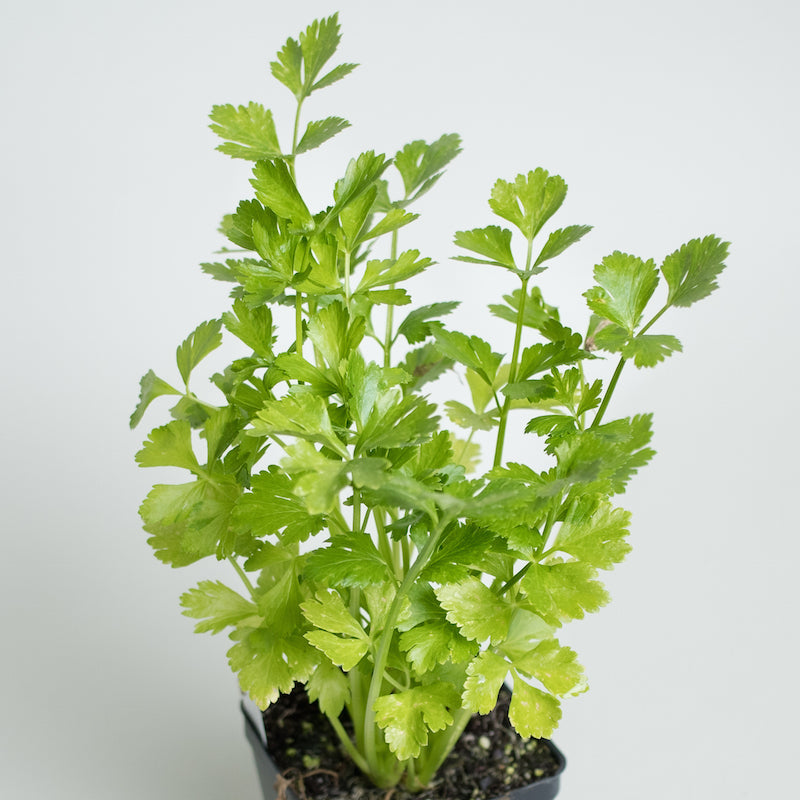

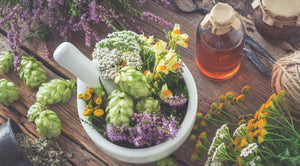
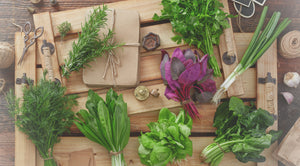
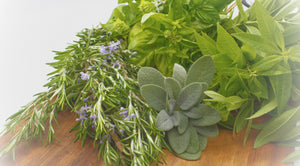
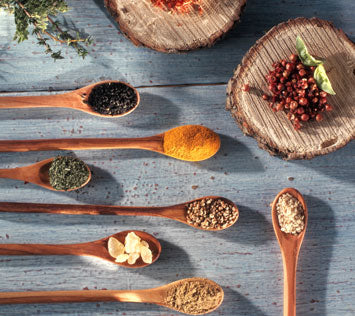
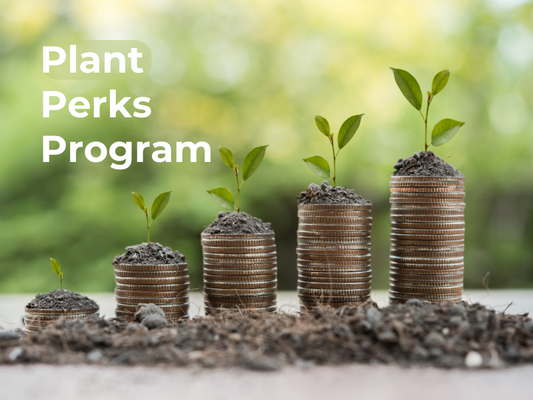

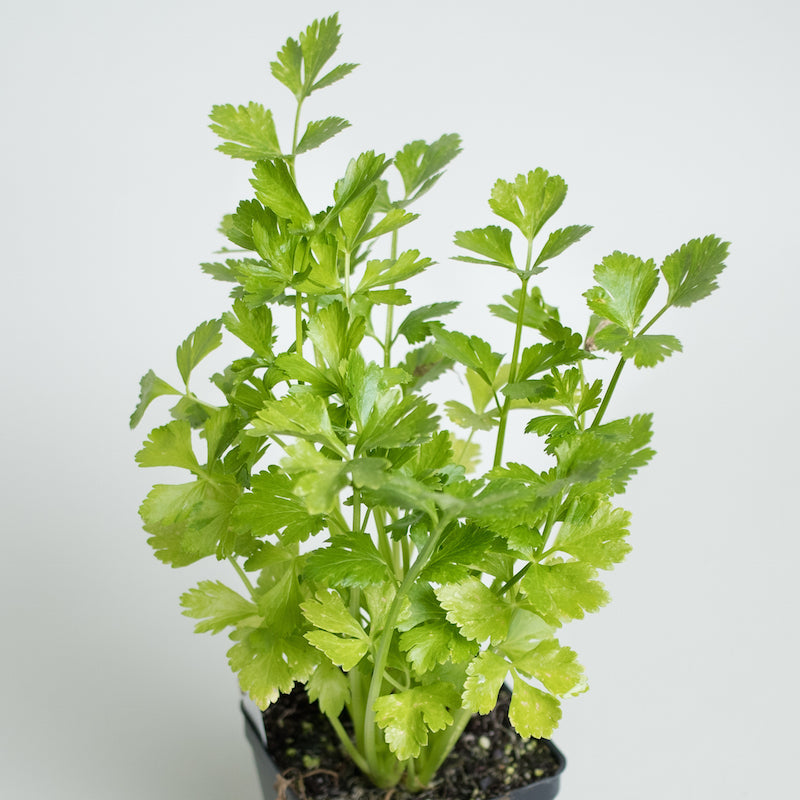



 Culinary
Culinary
 Medicinal
Medicinal
 Aroma
Aroma
 Container
Container
 Pollinator
Pollinator
 Indoor
Indoor
 Butterfly
Butterfly